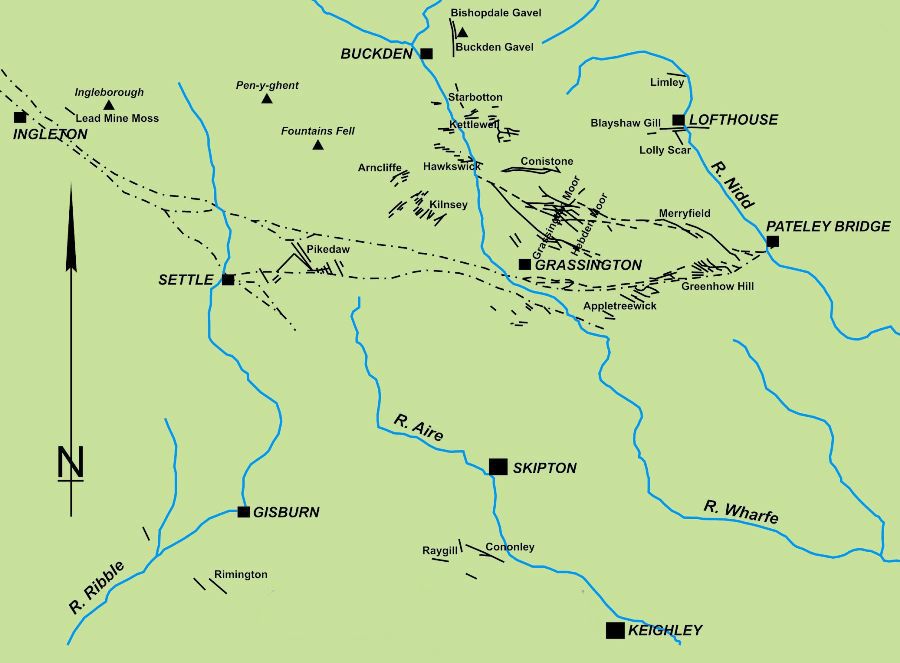Wharfedale, Nidderdale & Airedale
Here the veins ran through limestones, but ones that were lower in the stratigraphical sequence than the Main Limestone, which was absent. Around Grassington, in Wharfedale, and at Cononley, in Airedale, the veins were also rich in sandstone.
With the exception of the mines at Cononley, Grassington and on Greenhow Hill none of the others were particularly rich. Nevertheless, they provided employment for part of the population for over 300 years. Many of these miners probably supplemented their incomes by farm work when ever possible.
The Greenhow Mines were in thick beds of limestone and, as technology improved, miners were able to follow them ever deeper into the hill. This was especially so at the Cockhill Mine, which had two underground shafts, both with steam engines, to allow ore to be worked below the adit. The Greenhow mines had been important from late mediæval times, but they declined earlier than their neighbour at Grassington. A series of revivals sought to emulate earlier success as new technology was introduced, but the mines closed in the 1890s.
From time to time, in the twentieth century, some veins were also mined for fluorspar, which was in demand for flux used in steel making, and any lead. That industry died in the face of home competition from Derbyshire and the North Pennines.
There are other small mines around this area which are not included on the maps:
- Anglezarke Lead Mine near Chorley, working from 1594
- Bowland Lead Mines near Dunsop Bridge (please note that some of these mines are on private land)
- Thievely Lead Mine near Burnley, working from 1629
Each has a wide range of large and small mines.
Please also see the Smelting Mills of the Yorkshire Dales
Sources for further information:
- Yorkshire Dales Lead Mining Museum, Old Grammar School, School Lane, Earby, Barnoldswick, Lancashire, BB18 6QF
- Nidderdale Museum, The Old Workhouse, King Street, Pateley Bridge, North Yorkshire, HG3 5LE
Please note NMRS does not have any control over the contents of external websites
Return to previous page

